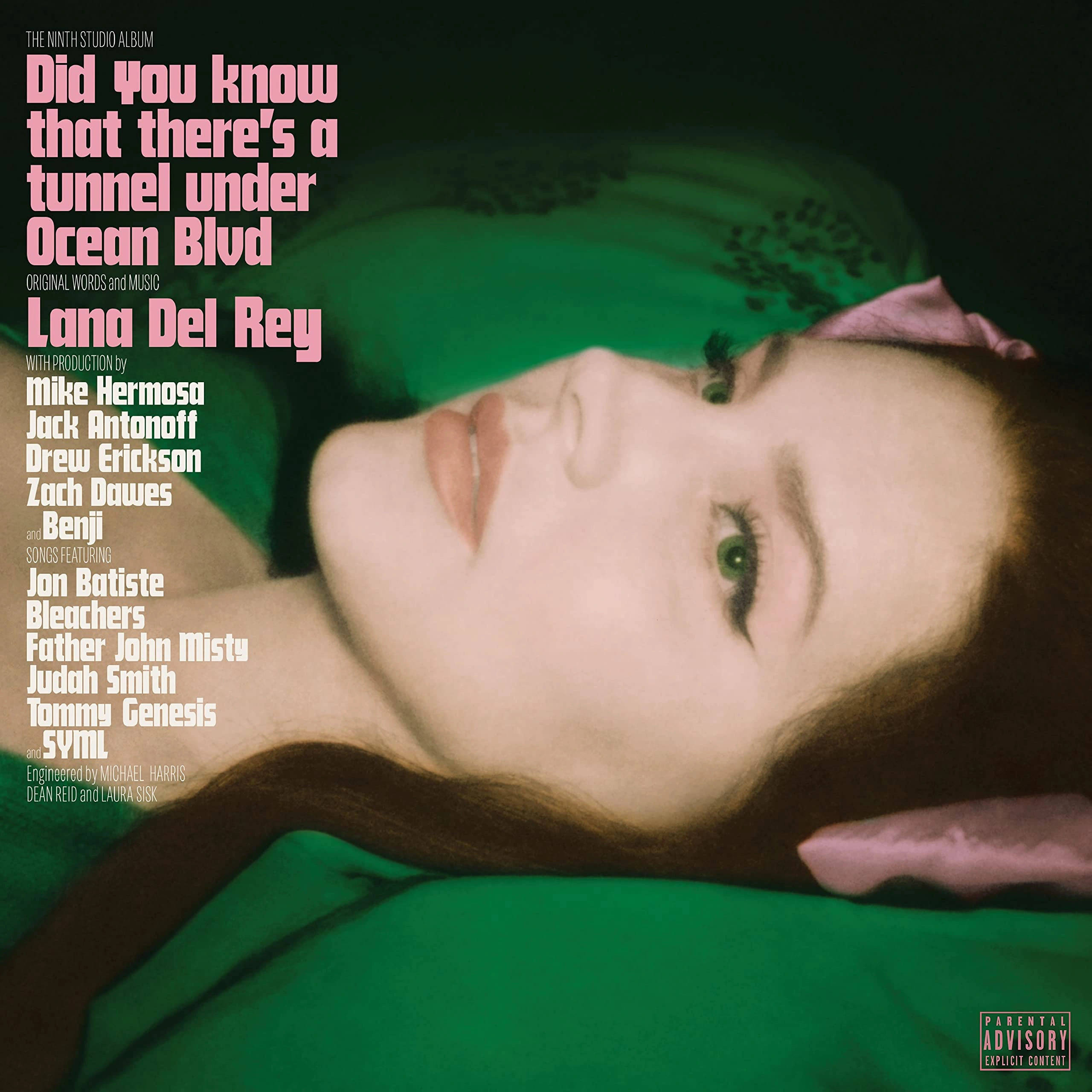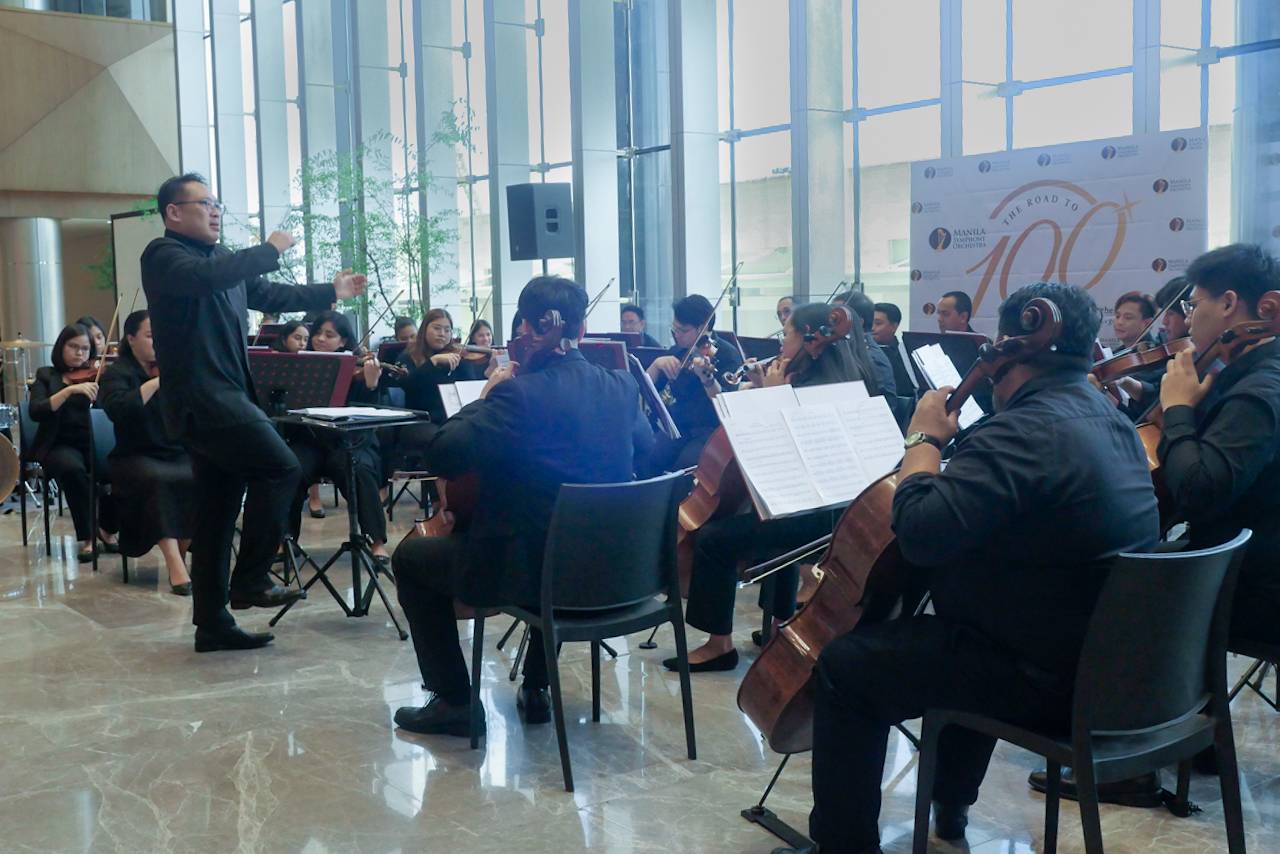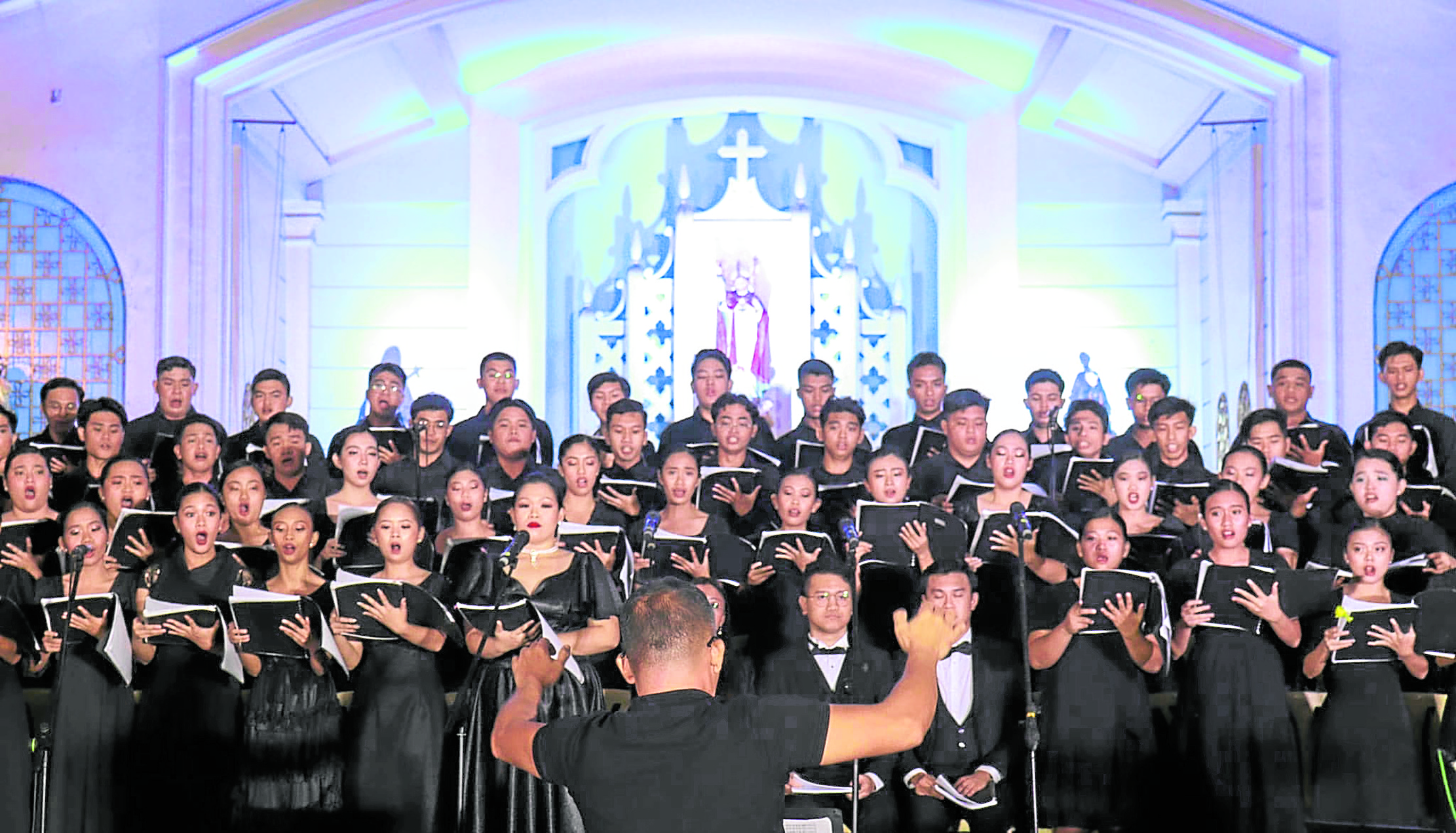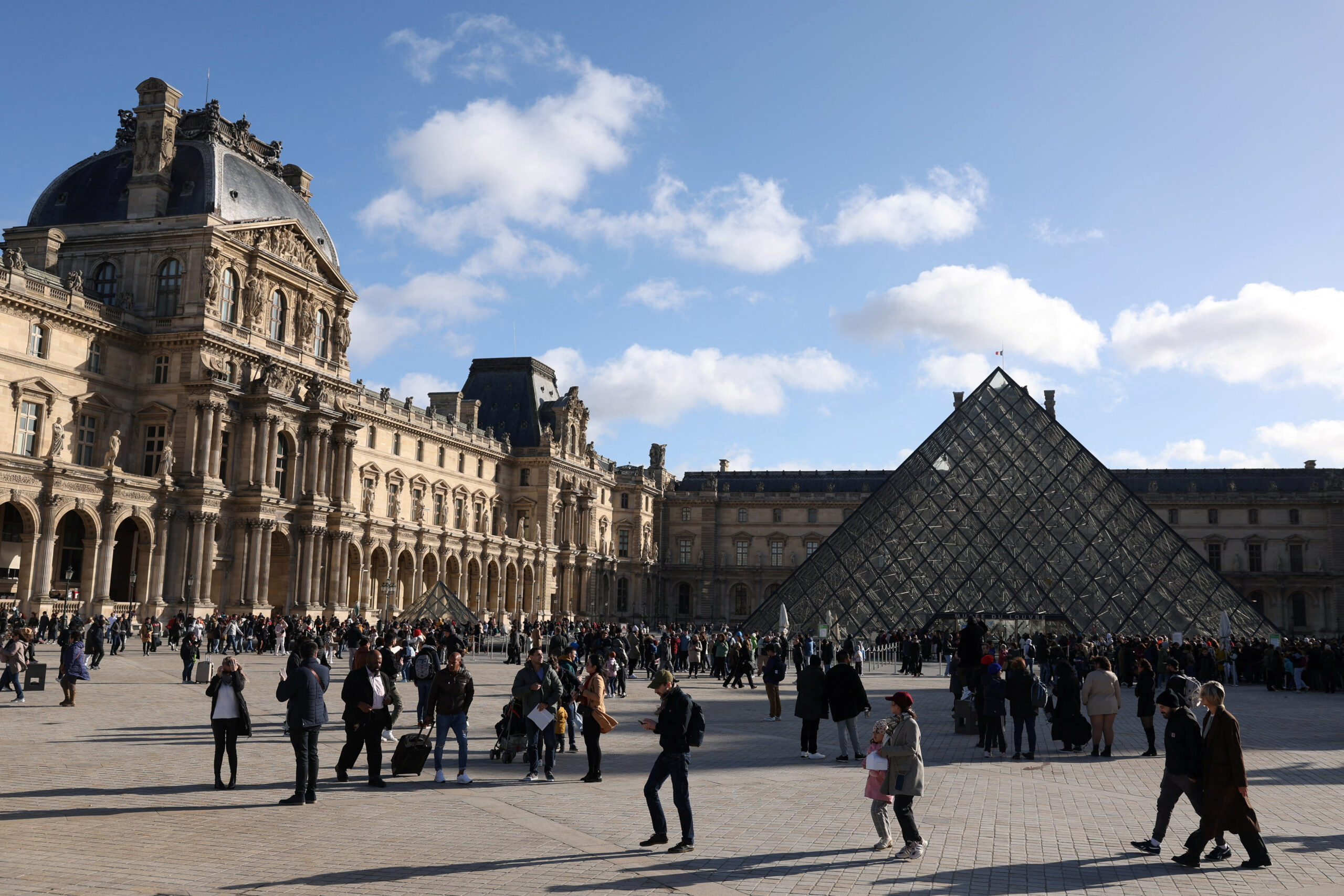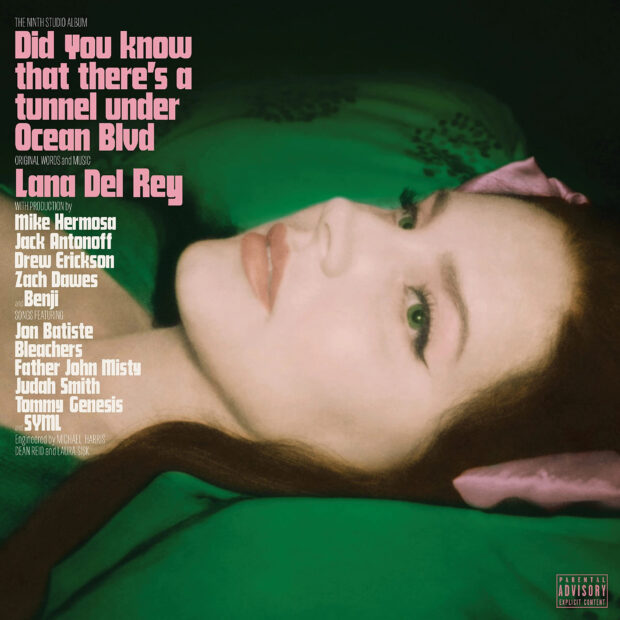
Lana Del Rey’s latest opus, “Did You Know That There’s a Tunnel Under Ocean Blvd,” is a work of art that speaks to the soul. It is a tapestry woven with intricate threads of meaning, sometimes visible only to the artist herself. This album is a journey through the labyrinthine corridors of the human heart, where beauty is fleeting and often forgotten, like the abandoned tunnel of the album’s title, with its mosaic ceilings and painted tiles sealed away.
In May 2022, Lana Del Rey revealed to W Magazine her secret to crafting her latest album: meditative automatic singing. She just sang into her Voice Notes app and let the words flow out of her like a river of poetry. The result is a lyrical labyrinth of intentionally wordy musings that make your brain work harder than a Rubik’s Cube. And hey, if you think the album title is a mouthful, just wait until you try to decipher the lyrics. “It’s a very wordy album,” she says. “It’s almost like I’m typing in my mind.”
From the opening moments of the choir rehearsal to the lingering sound of the piano’s sustain pedal, this album is a symphony of contrasts, blending the softest whispers with the loudest interruptions, the most profound revelations with the most puzzling contradictions. It delves into the very essence of existence and explores the consternation and complexity that come with their pursuit.
Del Rey’s haunting voice is the guiding star through this musical odyssey, leading us through the dark and the light, the joy and the sorrow, the beauty and the decay. “Did You Know That There’s a Tunnel Under Ocean Blvd” is a masterpiece of self-discovery and self-expression, a tribute to the enigmatic artist who created it, and a testament to the limitless depths of the human experience.
Let’s go on a journey through the album, one track at a time.
The Grants
In the opening track, Lana Del Rey carries with her the weight of memories and a yearning for connection that transcends the physical realm, even into the afterlife. Her caring and empathetic nature shines through in the tender notes of the song. The chorus is powerful and hymn-like, with gospel harmonies and a grand orchestral arrangement. While we often feel obligated to care for our loved ones, she doesn’t imply this. Rather, she specifically tells us she’s choosing in line with ‘want’. She doesn’t need to; she wants to, all for the better of it.
And I wanna take mine of you with me
I’m gonna take mine of you with me
Yeah, I’m gonna take mine of you with me
“The Grants” is a poignant meditation on the mysteries of life and death. Del Rey ponders what happens to us when we leave this world, invoking the words of a wise pastor who explained that we take our memories with us, leaving everything else behind. If this is true, the singer wonders what memories she will carry into the great beyond, and what will follow her into eternity. As the song unfolds, she lists her most precious memories, assuring those closest to her that she will hold them dear even in the face of loss.
My sister’s first-born child
I’m gonna take that too with me
My grandmother’s last smile
I’m gonna take that too with me
It’s a beautiful life
Remember that too for me
Her voice is imbued with a quiet longing and a sense of purpose, as if she is reaching out to the other side, seeking a connection that defies the boundaries of life and death. “The Grants” is a testament to the power of memory and the enduring bond of love, even in the face of the ultimate mystery.
Did you know that there’s a tunnel under Ocean Blvd
In the first single, released three months before the official release of the album, Del Rey talks of being forgotten. Her haunting voice echoes over the melancholic chords, opening the ballad with a vivid description of Jergins Tunnel, an abandoned transit center in Long Beach, California. The now-defunct tunnel, once a connecting route to the beach, flaunted striking features such as “mosaic ceilings” and “painted tiles,” which Lana parallels with her own ornate self.
I can’t help but feel somewhat like my body marred my soul
Handmade beauty sealed up by two man-made walls.
The possibility of abandonment terrifies her, and she laments her vulnerability to the passage of time in the same way the landmark was left to fade away. Famously known for her poignant songs about heartbreak and solitude, Lana sticks to these motifs in “Tunnel Under Ocean Blvd.” She voices her anxiety about being lost and alone, drawing parallels to the tunnel and its emptiness. Is it her time? Is it her turn?
Oh, man
When’s it gonna be my turn?
Don’t forget me
When’s it gonna be my turn?
Del Rey appears to be in search of passionate and physical love, one that can make her feel alive and present amidst the feeling of being forgotten. As the ballad reaches its crescendo, she leaves no room for doubt as she explicitly states her comparison to Jergins Tunnel.
Open me up, tell me you like it
F*ck me to death, love me until I love myself
There’s a tunnel under Ocean Boulevard
Don’t forget me
Like the tunnel under Ocean Boulevard
Sweet
“Sweet” is a poetic introspection of her identity, philosophy, and individuality as she addresses her lover. Known for her soul-searching tunes that explore the depths of human emotions and the complexities of life, Lana puts herself at the forefront of this track. This can be considered her most forward and honest yet when it comes to romantic entanglements.
I’ve got things to do, like nothing at all
I wanna do them with you
Do you wanna do them with me?
She’s done with games, and maturing with each new album, she mirrors the passage of time and societal changes. While she previously expressed only passing interest in love, she may now have a better idea of what she truly desires. The question remains whether she knows how to achieve it.
If you want someone, then just call me up
And remember where I’ll be
Sweet in bare feet
You can find me where no one will be
She opens up about her true self, the things that make her different, and what sets her apart from the rest. It’s a beautiful display of vulnerability and honesty as she bares her soul to the one who loves her, showcasing her raw authenticity and unique perspective on the world. And as it is her most honest, it is her most romantic.
A&W + Judah Smith Interlude
Jack Antonoff, the producer of this album, announced the release of the album’s second single on December 7, 2022, via Instagram. Antonoff, who has worked with several high-profile artists in the past, including Taylor Swift and Lorde, has expressed his enthusiasm for this particular track, calling it his favorite.
Del Rey’s “A&W” is a lengthy, storytelling track that can be divided into two distinct parts. In the first part, she reminisces about her childhood and early life experiences, while the second part covers her adult life and struggles with sex addiction, as suggested by the song’s title “American Whore.” The track is essentially a 7-minute long monologue, with Lana delving deep into her personal history and experiences.
She often touches upon the theme of being the proverbial “other woman” in her romantic relationships, perpetually cast as the understudy to the leading lady. While she has often lamented about being the lesser in her romantic relationships, her recent perspective seems to have taken a surprising turn. She now seems to have embraced the role of a “whore” who is hidden away and unloved, a shift in attitude that reflects her evolving views on love and relationships.
It’s not about havin’ someone to love me anymore
No, this is the experience of bein’ an American whore
In “A&W,” she explores the many facets of her identity, including her past, present, and future selves. It’s like she’s taken a selfie with a time machine and is analyzing every pixel of her evolution. The song’s title might be short for “American Whore,” but she is more like a shape-shifting chameleon, transforming her image with each passing album. It’s like she’s playing a game of musical chairs with her persona, and we can’t help but be mesmerized by the spectacle.
Del Rey has never been one to conform to traditional creative methods, and “A&W” may be the most extreme manifestation of her unconventional approach. The track is a unique blend of eerie folk and trap music, held together by nothing more than the sheer force of her star quality.
Thus, we follow the “Judah Smith Interlude”: an atmospheric sermon accompanied by a piano piece by Anontoff, in which hear controversial preacher Judah Smith. Smith has faced criticism for his anti-abortion and homophobic views, comparing homosexuality to “murder, rape, or living with your girlfriend.” Despite this, Smith has gained more popularity as an influencer than as a preacher in recent years.
Compared to the previous track, the “Judah Smith Interlude” is a hilarious irony fest. Del Rey is the kind of person who would show up to a flashy, star-studded mega-church to make fun of its showy grandeur with her friends. And that’s precisely what she does here: as Smith delivers his sermon, Del Rey and her crew can be heard snickering and giggling. When Smith describes God as a colossal, all-knowing being, Del Rey mutters a sardonic expression, dripping with biting wit. Other times, she can’t help but express her disgust at Smith’s cheesy absurdity. She laughs; and it’s like God laughs, too.
But what seals the deal is how Del Rey uses the interlude as a means to an end. As the excerpt of Smith’s sermon draws to a close, with the preacher talking about his career in a larger, existential context, he says, “I used to think my preaching was mostly about you. And you’re not gonna like this, but I’m gonna tell you the truth. I’ve discovered my preaching is mostly about me.” Del Rey can be heard snickering, as if to say, “We all know it’s really about you, Judah.”
Candy Necklace (feat. Jon Batiste) + Jon Batiste Interlude
“Candy Necklace” featuring singer Jon Batiste is a cautionary tale of love, obsession, and recklessness. While this album is a grungier, mature take on the perspective of life for Del Rey, it seems this song takes a look back on how she was before, as shown in her major-debut album, 2012’s Born to Die. A sort-of “black sheep”, it seems weird and almost inappropriate to include the track in a candy of songs of introspection; However, it is essential, especially when factoring in its spot in the tracklist. Del Rey looks back, to look forward.
Following Candy Necklace is a chaotic interlude between the two vocalists. It’s them laughing and having fun, shouting how much they feel, how good they feel, how they like to feel, whether early or late, all in piano-piece accompaniment of Antonoff. There’s beauty in the madness, always, and it’s necessary to take a look back at how we were before to fully allow the impressiveness of how we are now.
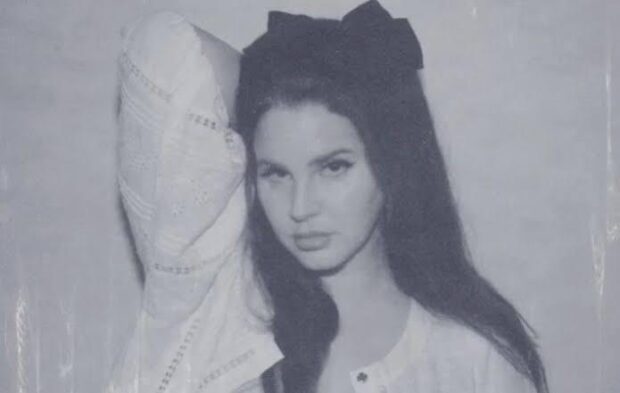
Kintsugi
The Japanese art of Kintsugi involves fixing broken pottery by filling the cracks with lacquer mixed with powdered precious metals like gold, silver, or platinum. This technique is similar to maki-e. In addition to being a physical method of repair, Kintsugi also has a philosophical aspect, in which the breakage and mending of an object are considered part of its history rather than something to hide or conceal.
Del Rey poetically references this practice and compares it to her heart, vividly painting a picture of a “heart of gold”. It has a nice sentiment of hope, and while it doesn’t just have hope, it creates a sense of hope through meaning.
But I can’t say I run when things get hard
It’s just that I don’t trust myself with my heart
But I’ve had to let it break a little more
‘Cause they say that’s what it’s for
In a promotional interview for this album, Del Rey revealed to Rolling Stone that she began writing “Kintsugi” while she, her sister, and her father were at her great uncle’s hospice in Manhattan Beach with other members of her family. She shared that she had a realization while singing with her family by her uncle’s bedside. She explained that she used to think she sang to escape her hometown, but she realized that wasn’t the case; As she sang, she went from thinking about her family and her uncle to contemplating her relationships and missing her loved ones, including her father. She sang to them, not away from them.
Think by the third of March, I was cracked open
Finally, the ground was cold, they wouldn’t open
Brought by the sunlight of the spirit to pour into me
There’s a name for it in Japanese, it’s “Kintsugi”
The track is her most personal yet; about grief, family, the power of love and longing, and how we can come back beautiful as ever, cracks and all. It is her at her best: purposefully revealing. The chorus, referencing the art and purpose of broken cracks and kintsugi, is simple and sweet: It’s how the light shines in. She ends that way, too. It’s how the light gets in.
Fingertips
In the familial midst of “Did you know that there’s a tunnel under Ocean Blvd,” Del Rey’s “Fingertips” delves into her personal musings in a fluid and spontaneous song that straddles the line between her music and her poetry. In contrast to the introspective and familial themes of the preceding tracks “The Grants,” “A&W,” and “Kintsugi,” the song reflects on the emotional weight of her past experiences and complicated relationships while also contemplating what the future holds.
The album’s central theme is family, which includes her desire to become a mother. In “Sweet,” she asks her partner if he wants to start a family with her, but in this song, “Fingertips,” she reflects on her doubts about having children and whether she is capable of raising them. She discussed her insecurities about becoming a mother in a separate interview with Rolling Stone in March.
Will the baby be all right?
Will I have one of mine?
Can I handle it even if I do?
It’s said that my mind
Is not fit, or so they said, to carry a child
I guess I’ll be fine
In another verse, Del Rey alludes to her dependence on psychiatric medications, which she also explored in her poetry book 2020’s Violet Bent Backwards Over the Grass. She asserts that taking multiple dosages of medicine is not a voluntary choice, but rather a necessary step for her to survive and cope with her emotions without facing dire consequences.
It wasn’t my idea, the cocktail of things that twists neurons inside
But without them, I’d die
She also references a critical take on her work as an artist since her debut a decade ago: Del Rey refutes the notion that her music is ironic and asserts that the themes she expresses are not meant to be satirical, but rather tragic. She clarifies that her tragedy is not in the same vein as Greek tragedy, which was intended to provide moral lessons on topics like justice, fairness, and divine providence to its audience. Instead, she suggests that her music portrays her own deeply personal experiences, and lacks any larger moral teachings.
They say there’s irony in the music, it’s a tragedy,
I see nothing Greek in it
“Fingertips” is a diary song; With no chorus and only ten verses, it features her innermost whispered thoughts accompanied by melodic entrapments as she speaks what she feels most. She grazes, almost roughly, to the point of destruction. Yet, in the midst of it all, she only touches gently.
Paris, Texas (feat. SYML)
Sharing the same name as the 1984 drama film directed by Wim Wenders, “Paris, Texas”, Del Rey takes a clever approach by mentioning American cities that share names with their grand European counterparts, but are much more modest and obscure. While Paris, Texas, Florence, Alabama, and Venice, California may not be the glamorous tourist destinations of their European namesakes, Lana highlights her appreciation for Americana by singing about the towns that hold personal significance to her. In doing so, she playfully subverts our expectations and reminds us that even the most unassuming places can be filled with beauty and meaning. She mentions no longer needing to wonder about her faltering relationship back home, thus moving on.
When everyone’s star is bright
Brighter than you are
It’s time to go
And you’re the only one left
Dancin’ while they’re on the floor
Time to go
The song uses the idiom “When you know, you know” to describe how her gut feeling gave her the nudge to move on from a past relationship without any hesitation or doubt.
When you know, you know
It’s time, it’s time to go
When you know, you know
Then the more you know
It’s time to go
In the final chorus, she cleverly switches up the idiom by replacing “know” with “home” and “right,” suggesting that returning home doesn’t make her feel like she made the wrong choice by leaving. Despite being alone now, she remains steadfast in her decision, proving that sometimes you just got to trust your gut and go for it.
When you’re home, you’re home
You’re home, when you’re alone
When you’re right, you’re right
Even when you’re wrong
Grandfather please stand on the shoulders of my father while he’s deep-sea fishing (feat. RIOPY)
This song takes its name from its concise and poignant chorus, where the singer implores her grandfather to stand atop her father’s shoulders while they’re fishing. Such a feat would result in both men gazing at the same point in the water, with the reflective surface blurring the distinction between them into a single image – a metaphor for the singer’s amalgamation of emotional, intellectual, and personality traits.
The lyrics in the following verse allude to Lana Del Rey’s (now defunct Instagram) 2020 post titled “Question for the Culture,” which sparked controversy and garnered backlash from some people who accused her of being racist. Despite her good intentions, the media portrayed her in a negative light, and this experience is referenced in the song.
Regrettably, also a white woman
But I have good intentions even if I’m one of the last ones
If you don’t believe me, my poetry, or my melodies
Feel it in your bones
I have good intentions even if I’m one of the last ones
The various interpretations of the song ultimately serve to support the overarching themes of the song, in which the singer explores and defends her authenticity. By suggesting that her father and grandfather’s combined reflection in the water might resemble certain aspects of herself, she argues that her own identity is deeply intertwined with her family history and personal heritage.
To sum it up, the tune is like a spiritual treasure hunt for truth, self-discovery, and a hotline to God’s customer service. Lana Del Rey wants everyone to come along on this adventure of finding our true selves, despite the world’s attempt to categorize us like a grocery store inventory.
At this point of the album, after a piano-heavy start, more sounds are coming in; Thus, we start to see (or rather, hear) the light at the end of the tunnel (above Ocean Blvd).
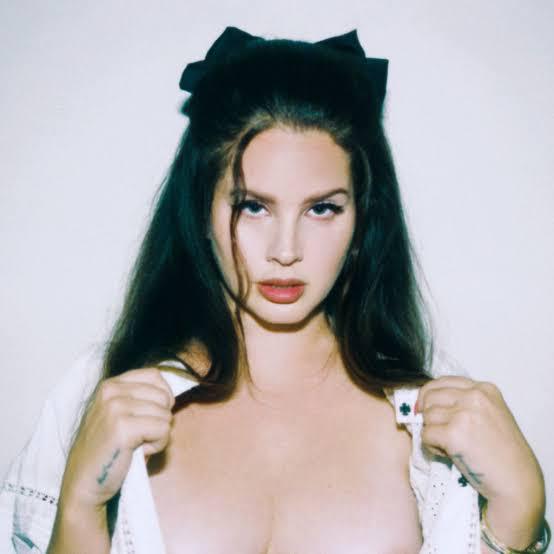
Let the Light In (feat. Father John Misty)
Del Rey’s “turbulent love” anthem is a captivating and raw depiction of the exhilarating highs and heart-wrenching lows that come with passionate relationships. The singer explores the complex dynamics of a relationship that is defined by its intensity and unpredictability, with a constant desire for excitement and pleasure at the forefront. Amidst the chaos, there is a strong sense of acceptance and trust between the two individuals, emphasizing the power of love as a source of strength and inspiration. Del Rey’s vulnerability is on full display as she acknowledges the challenges of navigating a relationship marked by uncertainty and self-discovery, yet finds solace in the mutual understanding and familiarity that exists between her and her partner.
When Lana Del Rey and Father John Misty join forces, it’s like a sonic lovechild is born. Their harmonies blend together in perfect pitch, like two hearts beating as one. The plea to “let the light in” is a call to action to open up and embrace the warmth of love, like a cozy fireplace on a cold winter night. The song’s message of hope and resilience is like a musical hug, encouraging listeners to hold on tight to the possibility of love and growth, even in the face of challenges. With references to the Beatles and the intimacy of candlelight, it’s clear that this song is a love letter to the power of connection and the beauty of human vulnerability.
“Let The Light In” shines a bright light on the emotional rollercoaster of love, weaving together powerful lyrics and enchanting melodies to capture the essence of a relationship that is both tumultuous and transformative. It’s a warm hug reminiscent of the ‘70s, full of peace, love, and the power of unity.
Margaret (feat. The Bleachers)
Del Rey writes what she considers a “rom-com-esque” track to her friends, producer Jack Antonoff and actress Margaret Qualley. She sings about her friend’s fiancée and portrays their relationship as a shining example of true love. The lyrics evoke a sense of admiration for the couple’s connection and suggest that their relationship is something to be envied.
With his moniker The Bleachers, Antonoff delightfully lets us in on his secrets when it comes to true love, The One, and whether it’s a myth on its own, proclaiming that there are no secrets, and that one just has to know for themselves.
If you’re askin’ yourself, “How do you know?”
Then that’s your answer, the answer is “No”
You gotta run, gotta run, run, run, run like your head’s on fire
Run away like your head is on fire
In her interlude, Del Rey reminds us to never give up love, a rarity for her to express positively.
So if you don’t know, don’t give up
‘Cause you never know what the new day might bring
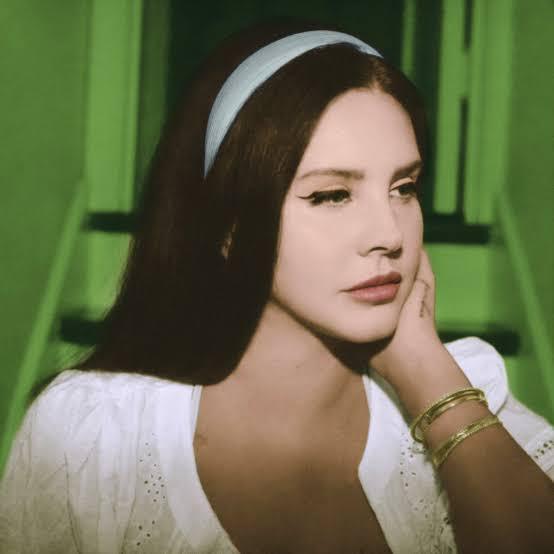
Fishtail
Del Rey cleverly plays with the double meaning of the word “fishtail” in her lyrics. On the one hand, it implies that her partner is inconsistent or “fishtails” in showing care for her. On the other hand, she links the word with the braiding of hair, specifically “fishtail braids,” symbolizing the care and attention she desires from her partner versus the false promises they give.
Don’t you dare say that you’ll braid my hair, babe
If you don’t really care
You wanted me sadder, you wanted me sadder
She realizes she’s been viewing their relationship in an unhealthy manner, full of contradictions and inconsistencies.
Palm trees in black and white
I see in technicolor
Maybe I’ll take my glasses off so I stop painting red flags green
In the chorus, she drops a truth bomb on her partner, revealing that they seem to prefer her in a state of sadness. This begs the question, is this relationship built on a foundation of genuine love, or just a twisted desire for emotional power play? She doesn’t hold back and demands that her partner cuts the BS and reveal their true intentions, singing, “Don’t just say it,” because actions speak louder than words.
Peppers (feat. Tommy Genesis)
Del Rey and Canadian rapper Tommy Genesis channel their inner Angelina Jolie, embracing their confidence and sex appeal in their song. Del Rey also mentions her boyfriend and how they effortlessly write hit songs while listening to the Chili Peppers, proving that the key to creativity is a good partner and a killer playlist.
Me and my boyfriend listen to the Chili Peppers
We write hit songs without tryin’ like
All the time, all the time
She even shares her boyfriend’s COVID diagnosis, showing that love is willing to take risks, in her most “Lana” lyric yet.
My boyfriend tested positive for COVID, it don’t matter
We’ve been kissing, so whatever he has, I have, I can’t cry
And let’s not forget the bridge where she suggests mashing up the song with 1962’s “Wipeout” by The Sufaris, proving that she’s not afraid to have a little fun and mix things up, fusing trap, hip-hop, and surf rock, a testimony of her as an experimental artist.
Taco Truck x VB
The closing track, “Taco Truck x VB” is a song that’s as multifaceted as a diamond, exploring themes of love, nostalgia, and self-discovery. It’s divided into two parts, like a sandwich that’s too big to eat in one bite. In the first half, she reflects on her relationship with her boyfriend, wondering what would happen if they actually gave a damn. The chorus introduces the nickname “Lanita,” which sounds like something you’d order at a white-washed Mexican restaurant, and describes her wild side that’s as unpredictable as a box of chocolates. In the second half, titled “VB,” she gets all misty-eyed and nostalgic, reminiscing about simpler times, young love, and getting high as a kite.
The post-chorus targets those who criticize her, urging them to “spin it” – a reference to how her words and actions are often taken out of context by the media to criticize her. The singer has faced backlash throughout her career for glamorizing abuse, drug use, and the “Lolita” aesthetic, as well as for not having a clearly defined persona early on. However, Lana Del Rey maintains that her words and actions have been misinterpreted and misunderstood, and the post-chorus serves as a statement of defiance against her detractors.
Spin it ’til you whip it into white cream, baby
Print it into black and white pages, don’t faze me
Before you talk, let me stop what you’re saying
I know, I know, I know that you hate me
Further in the second half, “VB” is a musical piece that samples Lana Del Rey’s track ‘Venice Bitch’ from her 2019 album Norman Fucking Rockwell!. The track features an unreleased and raw version of the song, giving it a unique and gritty edge doused in trap influences versus its official atmospheric, surf rock counterpart.

Lana Del Rey is a pop genius who reinterprets others’ work with intention, tracing her evolution and submitting her work for entry into the greater American songbook. “Did You Know That There’s a Tunnel Under Ocean Blvd” explores personal memory and family lineage. Despite accusations of posing, she remains the most naked and least affected pop superstar. The album demonstrates her tight grasp on her multi-faceted vision and drastic evolution as an artist, with several songs synthesizing her personality-driven pop genius and hyper-specific singer-songwriter style.
Although it’s unusual for an artist to have to defend their authenticity, she has been subject to criticism in some circles. Despite this, she has become something of an anti-heroine, gaining support from those who reject the manufactured pop world. Ironically, the true irony in her latest album lies not in her stage persona, but in the fact that she started with a stage name and yet now titles her opening track “The Grants” and delves into her life story with a raw and open heart. After being accused of putting on an act for so long, Del Rey may now be the most genuine and unpretentious pop star we have today. It’s a message that deserves to be broadcasted loud and clear.

